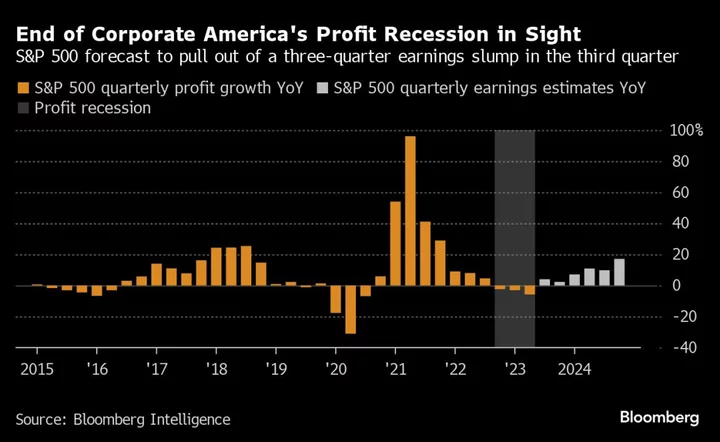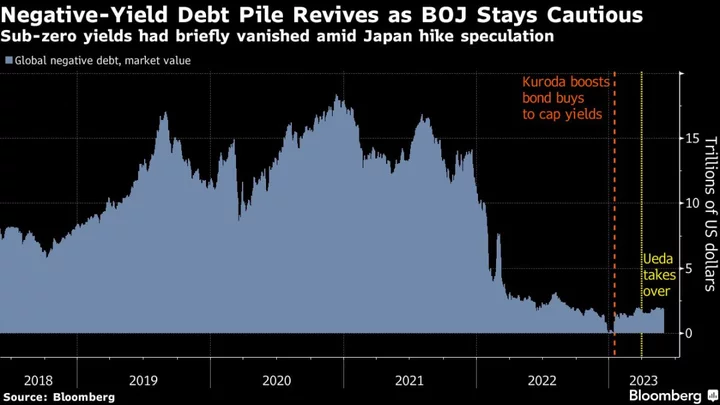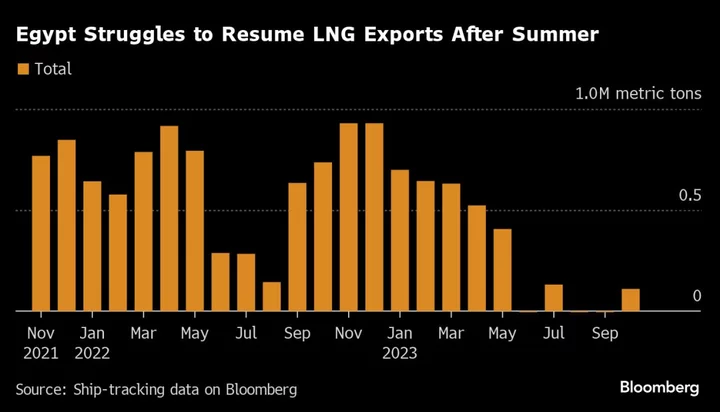As earnings season draws to a close, so does the S&P 500 Index’s profit recession. But that doesn’t mean the coast is clear for Corporate America.
Yes, profits are up 4% year-over-year with over 90% of S&P 500 firms having reported results for the third quarter, meaning a three-quarter streak of earnings declines is likely done, data compiled by Bloomberg Intelligence show.
But the catch for companies and investors is that earnings and outlooks from bellwethers like Target Corp. and Walmart Inc. are raising concerns about the health of the consumer — the engine that powers two-thirds of the US economy. The worrisome signals, amid higher interest rates and dwindling savings, put added focus on a bevy of results ahead next week from other major retailers, including Best Buy Co. and Dick’s Sporting Goods Inc.
“The outlook is murky for retailers because consumers are fickle,” said Louise Goudy Willmering, a partner at wealth-management firm Crewe Advisors. “While we’ve seen consumers’ willingness to spend on discretionary items turn on a dime in the past, we don’t see a significant spending slowdown yet. If there is one, it may be well into 2024.”
A return to profit growth would give US equities a needed tailwind into year-end, adding energy to the market’s November rally. But gloomy forecasts from retailers could derail the advance and spoil Wall Street’s hopes that ebbing inflation and wage increases will spur shoppers to open their wallets.
Investors still remember last year’s rough holiday season, when retailers were stuck with inventory after shoppers leaned toward essential items, from groceries to cleaning supplies, due to elevated inflation.
That’s why Walmart’s tone is fueling worries around demand, with a company executive citing a falloff in sales in late October before promotions and holiday shopping drove an improvement this month.
Excluding fuel, comparable store sales at Walmart’s US unit rose 4.9% year-over-year in the three months through late October. Target and Home Depot Inc. reported declines in that metric this week, as consumers continued to pull back from discretionary purchases. Gap Inc. also posted a quarterly drop in same-store sales, although its value-oriented Old Navy brand showed strong results.
Next week brings results from other high-profile retailers, including Nordstrom Inc., and Abercrombie & Fitch Co. Chipmaker Nvidia Corp. — the last of the so-called Magnificent Seven companies — also reports next week.
US retail sales slipped last month, but by less than forecast, bolstering bulls’ belief that Americans are still willing to spend. Holiday sales are forecast to increase 3% to 4% from last year, according to the National Retail Federation. The estimate is roughly in line with 2019 levels.
“Consumers simply do not stop wanting things,” said David Bahnsen, chief investment officer at The Bahnsen Group. “For the most part, people are employed, people are earning money and they have savings. I’m far more concerned about too low of a savings rate than potentially muting consumer demand.”
Retail stocks have had a challenging 2023 against a backdrop of aggressive Federal Reserve interest-rate increases. The S&P Retail Select Industry Index — which includes Amazon.com Inc., Costco Wholesale Corp. and Dollar Tree Inc. — has climbed about 4%, compared with the S&P 500’s almost 18% gain.
Although inflation has been cooling, Bloomberg Intelligence says margin-shredding price pressures will remain a key hurdle for the discretionary and staples sectors.
Indeed, retailers may face choppy sales toward year-end as pinched consumers wait for promotions to shop, says John Tomlinson at research and analytics firm M Science.
“It’s still the hardest quarter to predict,” said Tomlinson, the firm’s research director, noting that the fourth quarter typically has more discretionary sales. “I don’t think it’s going to be disastrous, and I don’t think it’s going to be a blowout holiday either.”
Author: Jessica Menton, Katrina Compoli and Alexandra Semenova









